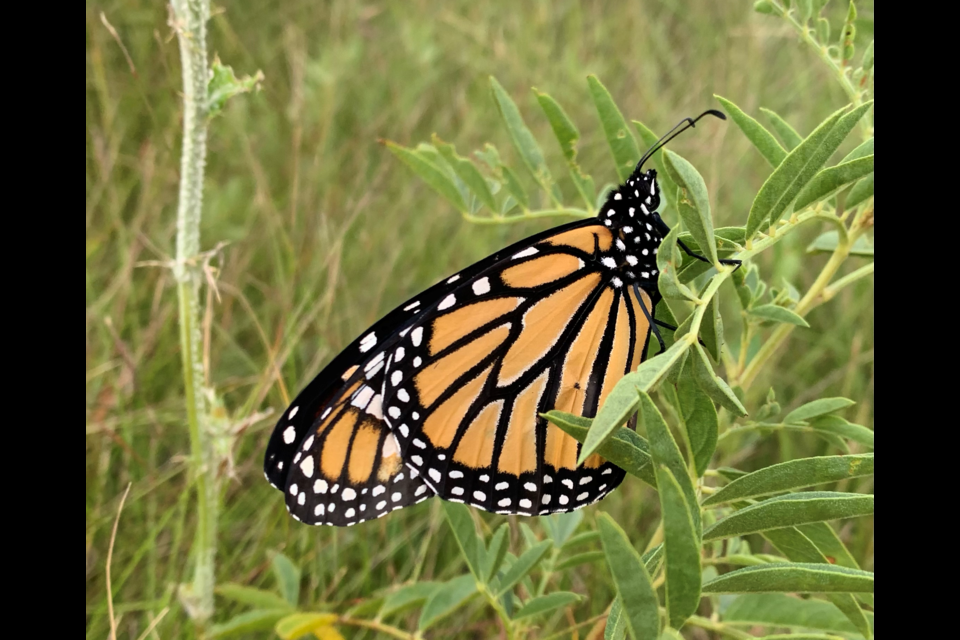REGINA - The last couple of weeks have seen a surge in Monarch butterfly and caterpillar (larvae) sightings. With the upcoming national Flight of the Monarch Day on August 20th, now is the perfect time to sharpen your Monarch identification skills and capture some photos and observations to share in the celebration!
Monarchs are a species at risk throughout their range with Saskatchewan being at the northern extent of their range. Nature Saskatchewan’s Stewards of Saskatchewan Coordinator, Rachel Ward, said “it takes between three and four generations for Monarchs to get from their over-wintering grounds, in Mexico, to Saskatchewan.” She adds “the generation emerging now will live the longest, making the full journey south back to Mexico to overwinter, so it is extra important that we help conserve the habitat for this incredibly important generation of Monarchs.” Nature Saskatchewan runs the voluntary Stewards of Saskatchewan program that works with communities and landowners to conserve Monarch habitat and help monitor the population each year.
Monarch butterflies are identifiable by their bright orange colouring with black veins throughout their wings, along with white spots on their black body and the outside edges of their wings. “Watch out for look-a-likes such as the Viceroy,” explains Ward. “Viceroys look very similar but have an extra stripe on their hind wings that cross their veins.” The Monarch caterpillars have distinct white, yellow and black stripes with black filaments on both ends. Ward adds “you will see these caterpillars nearly exclusively on milkweed plants”.
The most important factor for these butterflies is the availability of milkweed as it is the food source that they solely rely on during their larval stage, this means that it is critical for the areas that these caterpillars emerge in to have a supply of milkweed readily available. Once they are fully developed butterflies however, they will feed on a variety of blossoming flowers, so planting a native seed flower garden helps them greatly. If you were looking to help these beautiful butterflies out, planting milkweed is the best way to do it!
If you see a Monarch in Saskatchewan or would like more information about the Stewards of Saskatchewan program, please call Nature Saskatchewan’s toll-free line at 1-800-667-HOOT (4668), text (306) 780-9832, or email us at [email protected]. Please also feel free to share photos, they love to see them!




